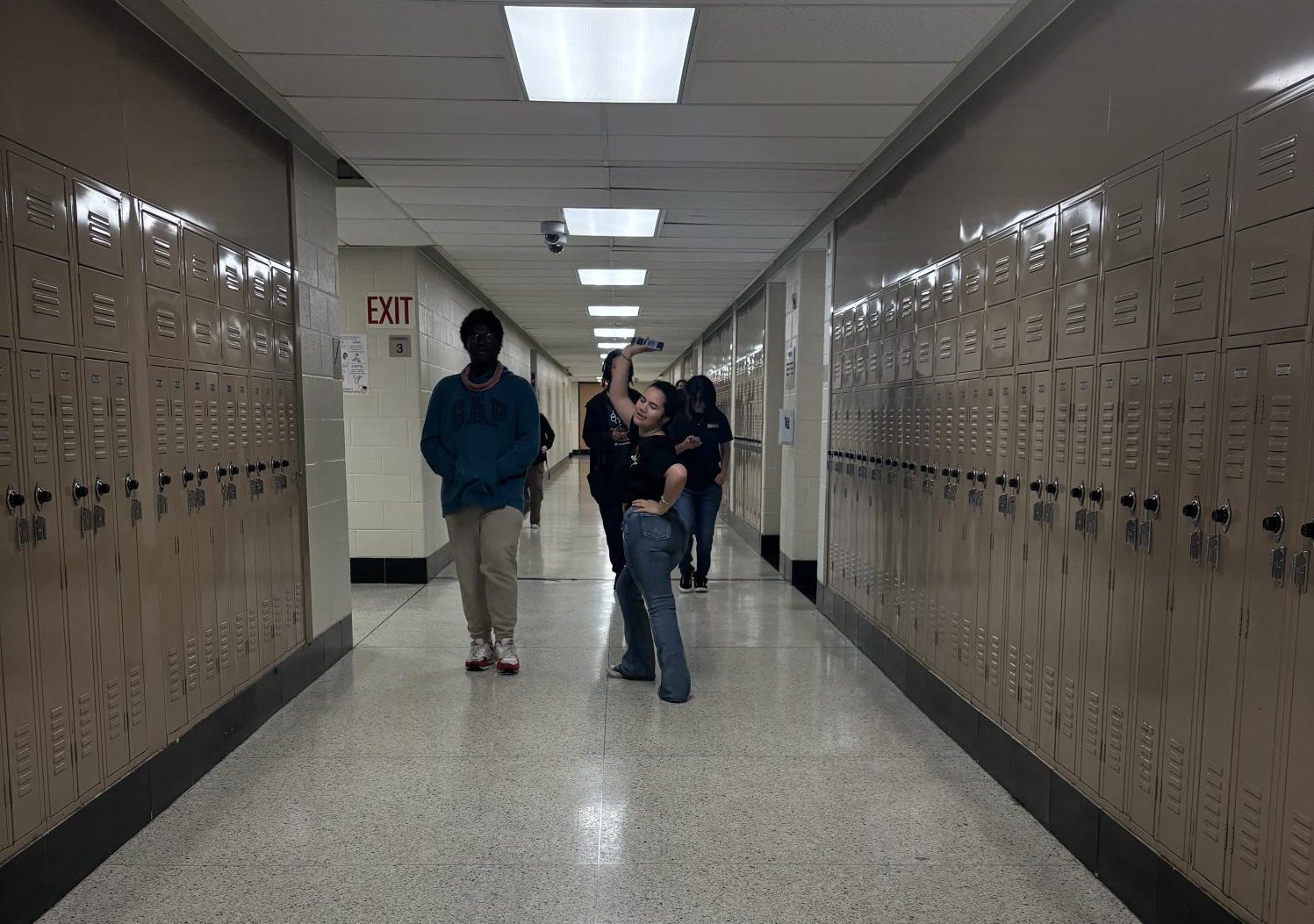Skipping. One of the seemingly small bits of “misbehavior” that nearly everyone knows about. You see it in our school and the media. It’s one of the few misbehaviors that most students, maybe even our parents and grandparents, have done at least once. I know I have.
With the concept of skipping being so common, a few teachers, and even some students, think they have a general idea of why students cut class as often as they do. The idea that students are uncaring, lazy, or simply bored is what usually comes to mind when the topic comes about. However, I have always wondered if there was a more complex reason that some people, including myself, tended to overlook. Maybe even reasons the “skippers” themselves don’t seem to know.
I know that I had skipped a few times in my ninth-grade year because I didn’t think it would have much of an effect on my grade while also thinking that I wouldn’t get in trouble if I were caught.
Spoiler alert: it did affect me academically and I did indeed get in trouble.
Most students may have the same thinking that I had then, but I wondered why, like me, they didn’t stop after seeing the consequences. This question led me to perform an investigation exploring that question: why are students cutting their classes so much?
Multiple teachers told me they believe that after COVID-19, many students craved socialization and that some of the students may care more to spend time with their friends, rather than sit in class with multiple people they don’t know.
One student, whose identity will be kept anonymous (along with those of the many other students and teachers who asked for the same privilege), told me that there’s little reason or motivation for her to attend school if the people she wishes to see aren’t there.
“If you don’t put those kids [who are friends] in the same class because you feel like they don’t work together, it’s like they have no real reason to come to your class,” she said.
Another theory for the spike in skipping classes is that students have become somewhat adept at “independent work” from having been in live class for roughly one and a half years.
“If I do the work and I’m learning, what to do when I’m doing the work, it doesn’t really matter that I’m in school,” that same student said. Despite her rarely attending class, she does believe she could still pass to the next class as long as she hands in her work.
One teacher heavily disagreed with that sort of philosophy, saying that being in class is vital for the proper learning experience.
“You miss out on organic learning experience, thought-process, judgment, evaluation, and decision-making,” the teacher said.
Another teacher agreed that being in the classroom is important but for a fairly different reason. She said that cutting classes daily, or even just occasionally, builds up a behavioral pattern, even if we don’t see it now. She spoke about how it’s rather difficult for teenagers to have the capacity to translate “something small and immediate” to their future. It can very much be reflected back to us in how we treat adulthood responsibilities.
“If you have an excuse for yourself now, you’ll be able to make an excuse for yourself in the future,” she said.
Something that many students, teachers, and even security guards agree on is that one major cause for students opting to wander in the halls rather than attend class is a lack of attention span. One security guard, who has ADHD himself and struggles with an attention span, said that he’s rather understanding to students who walk in the hallways (to an extent, of course).
“It’s hard to sit in class for 80 minutes, so if somebody wants to come up to me and say they’re taking one to two laps, I mean that’s fine by me,” he said.
I asked the security guard for his opinion on allowing around 5 to 10 minutes between classes, to which he pointed out that the likelihood it would be taken advantage of is not slim.
“They take that five minutes then stretch it to ten. If you’re giving an inch, they take a mile,” the security guard said.
According to him, who opted to remain anonymous, students in the hallways are most severe near the end of the day, end of class, on Fridays, and during lunch. I can personally understand why students would skip lunch, as the lunchroom is often very crowded and noisy. Even with the audion providing a quiet place to eat, it’s not always open and some students may simply not want to just sit in a single place for thirty minutes.
The lunchroom is boring, to say the least, as there is little to do. Even with some “lunch-room watchers” trying to “spice things up” with music and karaoke, some students may still prefer to walk around with their friends instead.
One pair of students suggested opening the courtyard to eligible students, something that could not only give students a chance to get a breath of fresh air but could also aid in promoting students to stay in good standing.
That’s what my previous school, Pottstown Senior High School, had done. “P.R.I.D.E. tickets,” which are a lot like our school’s “Eagle Points,” are used as payment to eat lunch in the school’s courtyard. However, it would be quite difficult to achieve the same thing, as there are around 1,238 more students here than in Pottstown.
Despite some understanding of why a student wouldn’t like to be in the classroom, teachers still feel as if there’s more the school could do in terms of consequences. Of the teachers I have spoken to, all agree on one thing: there doesn’t seem to be much of a consequence for students who cut class.
When students are caught skipping in the hallways and are reprimanded by a teacher, the teacher usually gets back-talked or ignored. At times a student may respond sweetly and say they will go to class, but it’s rather clear that it’s just “a front.”
“They’re not changing their behaviors, they’re just giving lip service,” one teacher said with a sigh.
Another teacher feels that students have little accountability within themselves, and the situation may improve if students were held more accountable and detention threats were being carried out more efficiently, as well as a further consequence if that detention was not attended.
“Without consequence, there will be no sustaining the behavior,” a different teacher told me.
According to another teacher who agreed with that statement, it’s not just the students who lack accountability but also the teachers themselves. Mentioning that by not giving an effective consequence to students, teachers are allowing the students to continue their actions. To express his frustration, the teacher used a vulgar analogy: “We’re not even training dogs here, we’re letting them run around and poop and pee where they want.”
Adding to the list of school system flaws that indirectly contribute to class-cutting, some teachers feel there is a flaw in the hall sweep and TPR system as well. One teacher noted that students are in the hallway because they don’t want to be in class. When they are taken into TPR, that student, in a way, is getting what they want.
Another teacher chipped into that sentiment, telling about the previous system that the school had post-COVID. She said that instead of TPR, we had ISS, and if you didn’t have work to complete then you were given a packet. If you failed to complete that work in ISS, then your ISS would not count. Since the work was stuff they didn’t wish to do, gradually their “class cutting” went down.
“You have to make being out in the hall worse than being in the classroom,” the teacher shared.
However another teacher, despite agreeing there’s a lack of effective consequence, thinks the school has gotten a handle on detentions, as you hear the conversation (or rather complaining) more from students. It’s just a little too late in the year for it to have any real impact. Despite that, she says it would still be favorable to take it into account for next year.
“Let’s take a good look at that and stick with the ones that have been working and do more of that,” she stated, regarding steps the school has taken to control misbehavior.
Despite that, the principal, Dr. McGriff, believes that positive reinforcement would be more beneficial. Being more sympathetic towards the students, he understands that after COVID-19, socializing is very important to students, hence the spike in them cutting class.
“That first year afterward, that was all students seemed to want to do was just to reconnect with the people that they miss being in contact with,” he shared. “I understand as many of our students, that they come from a culture where socializing is extremely important.”
Instead of trying to force them into class, he rather prefers to try to encourage them.
“I don’t lead with an iron fist, like: ‘hurry up, get back there!’ because that creates more stress and anxiety,” he explained, pointing out that stress and anxiety are probably why they’re in the hallway in the first place.
Other students I have spoken to have agreed that stress is another high contributor to students not wanting to be in class. Students may be stressed from home or other personal issues and would go into the halls to clear their heads.
“Then they end up falling into that habit, the more they do it the harder to stop,” one student expressed.
One other teacher also believes that positive reinforcement would be beneficial for the school. She talked about how reprimanding and scolding students may not always have the best effects, as many teenagers’ self-images of themselves can be very fragile.
“You internalize everything that people say to you, whether you want to or not. So I’m told multiple times that I’m bad, that I’m not meeting expectations, that I’m underperforming over and over again; you will start to internalize that as part of who you are naturally as a human being,” she shared, offering the idea for teachers to have positive relationships with their students instead of just acting as an authority figure.
Her statements add to what a different teacher shared: there is a “top-down effect” within the school. A lowering of students’ expectations passes through from the higher-ups (school board), to the teachers, and to the students themselves.
“If I think I’m good, I will make better choices. But if I’ve always been told that I’m bad, then what is the point of trying?” the previous teacher commented, taking on the perspective of a student’s thinking.
Throughout this investigation, I have received a lot of different answers, and a lot of different reasonings from both students and teachers alike. That students are stressed, that they’re not fully aware of how it’ll affect them in the future, the lack of attention span, and lack of consequence were all valid reasons that I heard. I feel if I were to truly dive into each one, this article would be the length of a novel. What I can say though, is that change does need to occur.
I never believed that teachers should care so much about whether a student is in their classroom and engaged, but after going through this journey and talking to many different people, my views have changed.
Getting students in their classrooms and engaged is vital not just to their well-being but also to the well-being of their future. Dr. McGriff urges students to share anything the school could do differently to get students more engaged in their classroom. The reasoning for students cutting classes isn’t always as black and white as some may think, the reasoning may be complex and something that needs to be worked through by both students and teachers alike.













